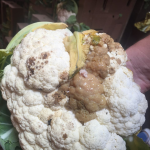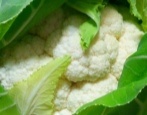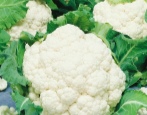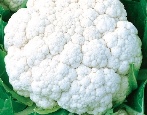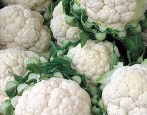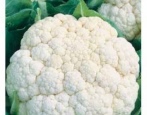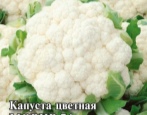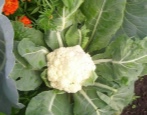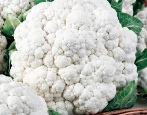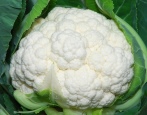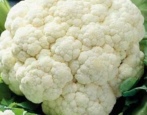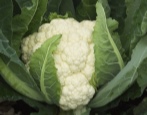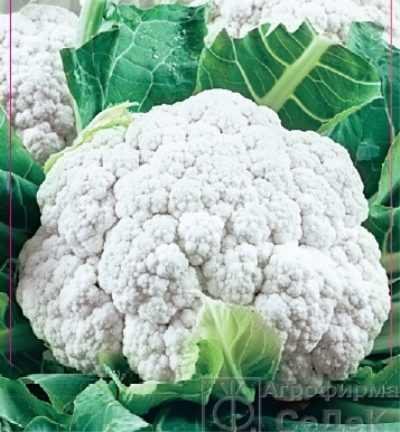
- Year of approval: 1994
- Appointment: for home cooking, for freezing, for canning, for fresh consumption
- Leaf color: bluish green
- Yield: high
- Average yield: 1.9-2.5 kg / m2
- The form: round
- Coloration: whitish
- Tuberosity: bumpy
- Weight, kg: 0,4-1,0
- Taste qualities: good and excellent
Cauliflower has been known to mankind for a long time - it was a favorite of the Roman patricians and European nobility, a little later the common people learned about it. Since then, she has steadily occupied her niche in the garden weave. Cauliflower variety Snowball 123 is one of the mid-early representatives of the crop with high marketability, an excellent set of nutrients. Designed for growing outdoors, in greenhouses and greenhouses.
Breeding history
The name Snowball was invented by the French company HM. CLAUSE S. A., comparing cabbage to a snowball. In the State Register of the Russian Federation, the variety was registered in 1994 for cultivation in all regions of the country.
Description of the variety
The variety is distinguished by amicable ripening and yield of fruits - one-dimensional, beautiful and snow-white heads, consisting of dense inflorescences. The weight of the heads varies from 400 g to 1 kg. The indicators depend on the conditions in which the vegetable is grown and the care it takes.
The advantages of the variety:
mid-ripeness;
attractive appearance;
excellent taste and a set of macro-, microelements;
stability of fruiting, unpretentiousness and strong immunity;
high content of vitamin C, excellent transportability and versatility in use.
The disadvantages include only the inability of ripe cabbage to be stored for a long time without being cut and the tendency to be damaged by the keel.
Characterization of the appearance of the plant and heads
The variety is distinguished by medium height, bluish-green leaves and snow-white - round compact heads. The surface of the inflorescences is bumpy, but dense. The leaves are tall, erect, half covering the head, which protects it from weather disasters.
Purpose and taste
Snowball has excellent taste, contains ascorbic acid and a significant amount of sugars. However, the balanced chemical composition makes the vegetable absolutely safe for allergy sufferers, those who adhere to proper nutrition and follow a diet. The culture is intended for use in cooking, canning and deep-freezing, as well as for the preparation of baby food.
Ripening terms
The variety belongs to the mid-early category - from the first shoots to technical ripeness, it takes from 85 to 90 days on average.
Yield
Snowball is distinguished by high yields - an average of 1.9-2.5 kilograms per square meter.
Growing regions
The variety is adapted for cultivation in all regions of Russia. These are the Central, Northern, North-West, Volgo-Vyatka regions, the Central Black Earth Region, the North Caucasian, Middle Volga, Lower Volga, as well as the Ural, West Siberian, East Siberian and Far Eastern regions.
Growing and care
Snowball cauliflower is grown in two ways: seedling and non-seedling. The average ripening period allows you to get a crop crop by direct sowing into the ground. For seedlings, seeds are sown around mid-April, in the southern regions - in early March and even at the end of February. In more northern areas in late April - early May. When transferring seedlings to a permanent place, the planting scheme is observed: 70x30 cm.The seedlings need regular moistening and feeding, carried out three times:
7 days after transplanting, the plants are fed with mullein infusion with the addition of manganese, boron and magnesium;
after 14–20 days, a solution of boric acid, copper sulfate and ammonium is used;
after the formation of the head, potassium sulfate is added.
Further care of the crop is no different from the standard set of agrotechnical measures. In those regions where summer is long and warm, for example Kuban, Crimea, Krasnodar, it is possible to get up to three harvests per season. To do this, the seedlings are planted in the exhaust gas in early May, then at the beginning of summer the seeds are sown in the garden, in the middle of June, the third sowing is carried out.
When planting seedlings in a permanent place, according to the recommended scheme, it is necessary to monitor the growth point - it must remain above the surface. To ensure that all holes are completely filled in the future, 2-3 seedlings are usually planted in 1 hole. After they get stronger, the extra ones are gently broken out.
Watering. This event is held regularly, but there is no need to create a swamp. Constant waterlogging threatens with rotting of the root system. With an excessive amount of precipitation, irrigation is reduced to a minimum or canceled altogether. In drought, on the contrary, the intensity of irrigation is increased. Standard amount of moisture: 10 liters per square meter, 2 times a week.
Loosening and weeding. Reception eliminates the formation of an earthen crust, ensures the penetration of oxygen into the ground and removes harmful weeds. The procedure is accompanied by the introduction of a small amount of wood ash and humus.
Top dressing. Before transplanting, superphosphate and organic matter are introduced into the soil, however, a fast-growing plant quickly consumes nutrients. That is why grown cabbage needs feeding in the same way as seedlings. The optimal nutrition is considered to be an infusion of mullein at the rate of 1: 10 and wood ash, in which there is a lot of potassium. If you use bird droppings, then you need to take into account its activity and even aggressiveness. Litter is diluted with clean water 1: 10 and insisted for several days. Then the infusion is again diluted to a concentration of 1: 10. After that, a solution is added under each bush in the amount of 0.35 l. The first feeding is carried out 3 weeks after planting in the exhaust gas, then the procedure is repeated after a decade, but the dose is doubled. Top dressing is carried out only after watering in cloudy and calm weather.
At this time, the culture already needs macro-, microelements, so 20 g of nitrophoska, 2 g of boric acid and 2 g of ammonium molybdate per 10 liters are added. Such a mixture will allow you to get an excellent harvest of healthy and tasty vegetables.
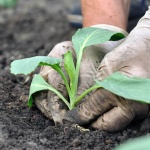
Soil requirements
For planting, choose sunny places with good heating of the soil. At the same time, the principles of crop rotation are observed - you cannot plant cauliflower after cruciferous plants, such as:
turnip;
radish;
radish;
cabbage and others.
Suitable for cultivation is soil with a neutral level of acidity and good fertility.
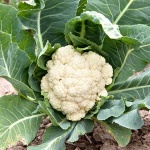
Required climatic conditions
Despite the fact that the variety loves well-heated soils and has good tolerance to high temperatures, drought is destructive for it. During such a period, cabbage must be watered vigorously, otherwise its inflorescences will become loose and dryish, with a pronounced bitter taste.
Disease and pest resistance
The vegetable is almost immune to various diseases, which greatly facilitates its cultivation. He is not afraid of keels, black legs and downy mildew. However, strong immunity does not make it less attractive to cabbage mats laying eggs on it. It is necessary to carefully monitor the plantings and treat them with insecticides after the appearance of caterpillars.The use of chemistry can be replaced by folk or mechanical means, for example, manual collection.
